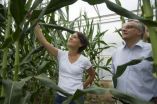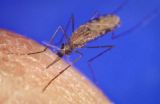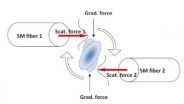(Press-News.org) Hybrid plants provide much higher yield than their homozygous parents. Plant breeders have known this for more than 100 years and used this effect called heterosis for richer harvests. Until now, science has puzzled over the molecular processes underlying this phenomenon. Researchers at the University of Bonn and partners from Tübingen and the USA have now decoded one possible mechanism in corn roots. More genes are active in hybrid plants than in their homozygous parents. This might increase growth and yield of the corn plants. The results are published in the renowned scientific journal Genome Research.
The world population continues to grow and needs to be fed. Cereals provide more than 70 per cent of human nutritional energy. Their yield increases significantly when plant breeders make use of the heterosis effect: "Heterozygous hybrids are significantly more vigorous than homozygous varieties" says Prof. Dr. Frank Hochholdinger, chair of Crop Functional Genomics at the University of Bonn. Heterosis can double the yield of grains like corn or rye. Hence, a hybrid corn cob is usually much larger than that of a homozygous plant.
Molecular causes elusive
Homozygous plants are a result of inbreeding depression: yield shrinks with every generation. Hence, most of the corn grown in Europe and the USA are hybrids. But why are hybrid plants more efficient than their homozygous relatives? "This effect has been known for over 100 years, yet its molecular cause remained unknown until now" reports first author Dr. Anja Paschold, associate of Prof. Hochholdinger at the Institute for Crop Science and Resource Conservation. The findings of the research team now support at a molecular level the complementation model hypothesized in 1917, which suggests that beneficial heritable characters from both parental lines complement deleterious or absent characters in the hybrid plant.
Transcripts indicate the status of gene activity
Researchers at the University of Bonn and their colleagues at Iowa State University and the Max Planck Institute for Developmental Biology in Tübingen compared gene activity in roots of young homozygous and hybrid corn plants. Transcripts provide the blueprints for important proteins. If a certain protein is required, a copy of the corresponding gene is made from the DNA in the nucleus of the cell. This copy of the gene – a 'transcript' – is used as a blueprint for producing the relevant protein. "Transcripts are present whenever the corresponding gene is active," explains Prof. Hochholdinger. Researchers are now surveying all transcripts present in the cell to know which genes are active.
Researchers doing detective work
"Our methods are similar to those of a crime scene investigator. We try matching transcripts – the 'fingerprints' – to the corresponding genes – the criminal records" says Prof. Hochholdinger. If a fingerprint is found, then it proves that the corresponding gene is active. "It's just like a fingerprint found at a crime scene," the biologist explains, "The investigators then know which individual must have been active on the scene." High-throughput automatic sequencing machines at the Max Planck Institute for Developmental Biology in Tübingen helped to identify the gene transcripts. "Of the 39,656 known corn genes, close to 90% were active in the studied plants," reports Dr. Paschold.
A few hundred additional genes are active in hybrid plants
However, it has been demonstrated that in hybrids several hundred additional genes were active compared to the homozygous parental lines. The same number of genes is inherited from the two parental plants, however, their activity can differ in the mother and father plant. In hybrids, these different activities are combined. "Compared to the approximately 34,000 active genes the number of 350 to 750 genes that are additionally activated in hybrids is relatively small" says Prof. Hochholdinger, "And yet the small genetic contribution of each of these gene could significantly increase growth and vigor of hybrids."
Practical benefit for plant breeders
Researchers now want to find out more about the advantages that additional gene activity in hybrids could provide. These findings might provide practical benefits in the future. Until now, plant breeders use extensive field trials to find out which combinations of the thousands of various corn varieties result in efficient hybrids. "Our findings could result in a preselection that could reduce breeders' efforts and expenses," says Prof. Hochholdinger.
INFORMATION:
Publication: Complementation contributes to transcriptome complexity in maize (Zea mays L.) hybrids relative to their inbred parents, Genome Research, DOI: 10.1101/gr.138461.112
Podcast zum Thema:
http://www.uni-bonn.tv/podcasts/20120802_ST_Hochholdinger.mp4/view
Contact:
Prof. Dr. Frank Hochholdinger
INRES – Crop Functional Genomics
Tel. 0228/73 60334 or 73 60331
Email: hochhold@uni-bonn.de
Dr. Anja Paschold
INRES – Crop Functional Genomics
Tel. 0228/ 73 54269
Email: paschold@uni-bonn.de
Corn: Many active genes - high yield
Researchers at the University of Bonn investigate 1 of the oldest mysteries of plant breeding
2012-12-03
ELSE PRESS RELEASES FROM THIS DATE:
Have Venusian volcanoes been caught in the act?
2012-12-03
Six years of observations by ESA's Venus Express have shown large changes in the sulphur dioxide content of the planet's atmosphere, and one intriguing possible explanation is volcanic eruptions.
The thick atmosphere of Venus contains over a million times as much sulphur dioxide as Earth's, where almost all of the pungent, toxic gas is generated by volcanic activity.
Most of the sulphur dioxide on Venus is hidden below the planet's dense upper cloud deck, because the gas is readily destroyed by sunlight.
That means any sulphur dioxide detected in Venus' upper atmosphere ...
Malaria parasite's masquerade ball could be coming to an end
2012-12-03
More than a million people die each year of malaria caused by different strains of the Plasmodium parasite transmitted by the Anopheles mosquito. The medical world has yet to find an effective vaccine against the deadly parasite, which mainly affects pregnant women and children under the age of five. By figuring out how the most dangerous strain evades the watchful eye of the immune system, researchers from the Hebrew University of Jerusalem have now paved the way for the development of new approaches to cure this acute infection.
Upon entering the bloodstream, the Plasmodium ...
BU, VA study describes 68 CTE cases in veterans, high school, college and pro athletes
2012-12-03
(BOSTON) – A study done by investigators at the Boston University Center for the Study of Traumatic Encephalopathy (CSTE) and the Veterans Affairs Boston Healthcare System, in collaboration with the Sports Legacy Institute (SLI), describes 68 cases of chronic traumatic encephalopathy (CTE) among deceased athletes and military veterans whose brain and spinal cords were donated to the VA CSTE Brain Bank. Of the 68 cases, 34 were former professional football players, nine had played only college football, and six had played only high school football. The results, which will ...
New York's Medical Schools urge Congress to preserve NIH funding for scientific research
2012-12-03
The Associated Medical Schools of New York (AMSNY) today directed a letter to the New York State Congressional
Delegation calling on them to reject a nearly 10-percent cut to the National Institutes of Health (NIH), Medicare and
Title VII health professions programs, that will take effect January 2, 2013.
"In order to meet the health challenges of an aging and increasingly diverse population, continue to foster the types
of innovation that will drive our regional economy, and remain a vibrant force in the global economy, we need to
invest more in medical research ...
World's smallest wrench puts a new twist on microscopic manipulation
2012-12-03
Harnessing laser light's ability to gently push and pull microscopic particles, researchers have created the fiber-optic equivalent of the world's smallest wrench. This virtual tool can precisely twist and turn the tiniest of particles, from living cells and DNA to microscopic motors and dynamos used in biological and physical research.
This new twist on controlling the incredibly small, developed by physicists at The University of Texas at Arlington, will give scientists the ability to skillfully manipulate single cells for cancer research, twist and untwist individual ...
Male chimpanzees choose their allies carefully
2012-12-03
The ability of male chimpanzees to form coalitions with one another in order to direct aggression at other male chimpanzees has certain benefits. A new study by Ian Gilby at Duke University in North Carolina and his colleagues has further revealed that it may not just be the coalition that is important, but who the coalition is with that determines future success. Their study finds that male chimpanzees with central positions in the coalitionary network were most likely to father offspring and increase in rank. Specifically, those who formed coalitions with males who did ...
Research explores markers of depression from childhood to adulthood
2012-12-03
Although several studies have followed the course of depression throughout the lifespan, the characteristics of depression at different developmental stages haven't been clearly identified. New research published in Clinical Psychological Science, a journal of the Association for Psychological Science, presents a unique longitudinal investigation of depression across four critical developmental periods from childhood to adulthood.
To better understand the developmental course of Major Depressive Disorder (MDD), Paul Rohde of the Oregon Research Institute and colleagues ...
Experts urge rapid evaluation for swallowing and voice problems after brain surgery
2012-12-03
Johns Hopkins experts are recommending early post-surgical assessment
-- preferably within 24 hours -- for trouble chewing and swallowing
food, or speaking normally, among patients who have had benign tumors
removed from the base of the brain.
Such early assessments, they say, may minimize complications
associated with the sometimes hazelnut-sized tumors, called
vestibular schwannomas. Damage can arise when the tumors themselves
press on the nearby cranial nerves -- key to controlling the tongue,
lips, mouth and throat -- or from the surgery itself.
Researchers ...
Leuven research opens new pathway for the treatment of Alzheimer's disease
2012-12-03
Scientists from VIB and KU Leuven have discovered a new target molecule for the development of a treatment against Alzheimer's disease. There is currently no cure for this disease. Many candidate drugs fail because they also target proteins essential to life. This discovery from Leuven could form a target for a treatment against Alzheimer's disease with fewer side effects and that suppresses the very first symptoms of the disease. This research will be published in the leading journal Nature Medicine.
Alzheimer's Disease
Alzheimer's Disease is the most common form of ...
Uncovering unique properties in a 2-dimensional crystal
2012-12-03
When the dry lubricant, molybdenum disulfide, is stripped down to a single layer of atoms, a tightly bound quasi-particle comprised of two electrons and a hole forms with unique spin and valley properties, researchers from Case Western Reserve University and colleagues discovered.
These charged quasi-particles, called negative trions, can be manipulated to change the light absorbed and emitted from this two-dimensional semi-conducting crystal, opening it to potential use in new solar cells and other electronic devices that are controlled by light or designed to control ...
LAST 30 PRESS RELEASES:
Study finds brain care score can predict risk of stroke across racial groups
Key lung immune cells can intensify allergic reactions
Do hormones explain why women experience more gut pain?
New materials conduct ions in solids as easily as in liquids
Breakthrough of the Year: Renewable energy begins to eclipse fossil fuel-based sources
LLM use is reshaping scientific enterprise by increasing output, reducing quality and more
Introducing LightGen, a chip for ultra-fast, ultra-efficient generative AI
Astronomers see fireworks from violent collisions around nearby star
ACC/AHA issue new guideline on managing congenital heart disease in adults
Cosmic crash caught on camera
Is talented youth nurtured the wrong way? New study shows: top performers develop differently than assumed
Ants: An untapped resource in the development of antibiotics?
Archaeologists use AI to create prehistoric video game
Mitochondria migrate toward the cell membrane in response to high glucose levels
Tiny viral switch offers hope against drug-resistant bacteria
Most parents aware of early peanut introduction guidelines, but confused about details
HPV vaccine can protect against severe lesions of the vulva and vagina
Virtual care provision and emergency department use among children and youth
Quadrivalent HPV vaccine and high-grade vulvovaginal lesions
Insights into dry eyes gained from stem cell-derived tear glands
Researchers identify 166 human pluripotent stem cell lines available for use in clinical applications
Europa Clipper instrument uniquely observed interstellar comet 3I/ATLAS
UN University Report challenges climate change as sole trigger of Syrian Civil War, exposing governance failures in drought response
Real estate investment trust (REIT) acquisition associated with hospital closure and bankruptcy
New Raman imaging system detects subtle tumor signals
Boston Children’s receives a $7.5 million grant from Aligning Research to Impact Autism (ARIA) to provide clinical research coordination for the IMPACT Network
Spray-on antibacterial coating offers new protection for plants against disease and drought
ESMT Berlin study: What makes a first offer successful in negotiations
Groundbreaking ceremony marks the beginning of CTAO-South Array construction in Chile
Why swearing makes you stronger
[Press-News.org] Corn: Many active genes - high yieldResearchers at the University of Bonn investigate 1 of the oldest mysteries of plant breeding



